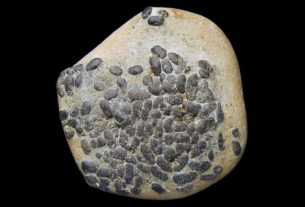In Egypt, Dr. Khaled El-Anany, Minister of Tourism and Antiquities, recently inspected the excavations of an ongoing archaeological mission to the northwest area of King Marinara’s pyramid in Saqqara. On site, the teams discovered five new tombs dating from the Old Kingdom and the first transition.
Egyptian archaeologists have unearthed five incredibly well-preserved and brightly decorated new tombs. All were excavated to the northwest of the pyramid of Pharaoh Merenre I (whose construction was probably stopped before its completion).
According to researchers, these tombs date from the Sixth Dynasty (around 2323 to 2150 BC) or the one that follows it, called the First Intermediate Period (2150-2030 BC). ). Under the Sixth Dynasty, ancient Egypt was still united, but was already suffering from the drought that would later threaten the stability of the country. The First Intermediate Period was much more complicated. At the time, the country was ruled by a number of local rulers following the collapse of central power.
All of these tombs display hieroglyphic inscriptions that provide information about the people buried. According to the statement from the Ministry of Tourism and Antiquities, given their location near the pyramid of Pharaoh Merenre I, it is possible that some of these people worked for the latter.
Who is buried?
According to hieroglyphics, one of these tombs belongs to a person named “Iry”. It was probably a senior official. The walls of his burial chamber display several drawings, including scenes of offerings. This person lay in a huge limestone sarcophagus broken into several pieces. The excavation team is currently working to reconstruct it.
Another tomb appears to belong to the wife of a man named “Yart”, while another belongs to a man named “Bi Nafarhafayi” who held several positions including that of sole Samir, overseer, priest and purifier of the house (a reference to the palace where the pharaoh resided).
The fourth tomb was that of a woman whose name could be translated as “Betty” or “Petty”, a priestess who served Hathor, a goddess associated with love and fertility.
Finally, the fifth was that of a person called “Hannu”. Again, it was probably someone important. Among his titles are “supervisor of the royal palace”, “sole emir”, “hereditary prince and mayor”, “overseer of the Great House”, “bearer of the seals of Lower Egypt” and “overseer of the orchard”.
Excavations and analysis of the tombs are still in progress.




